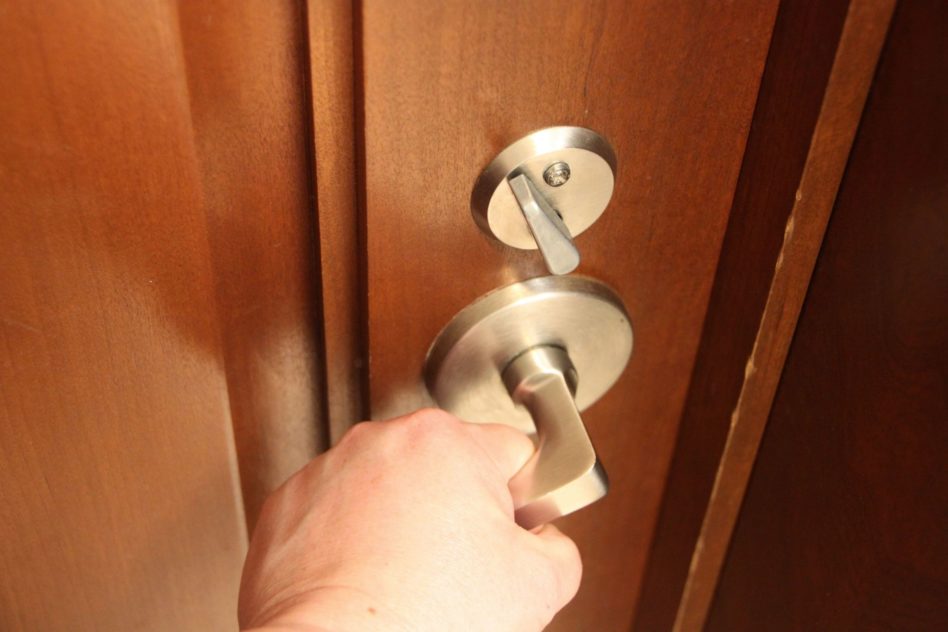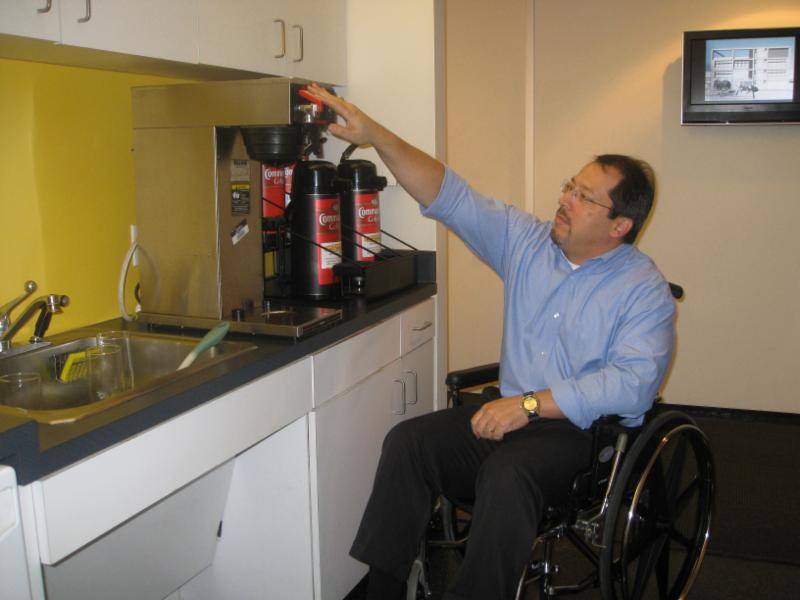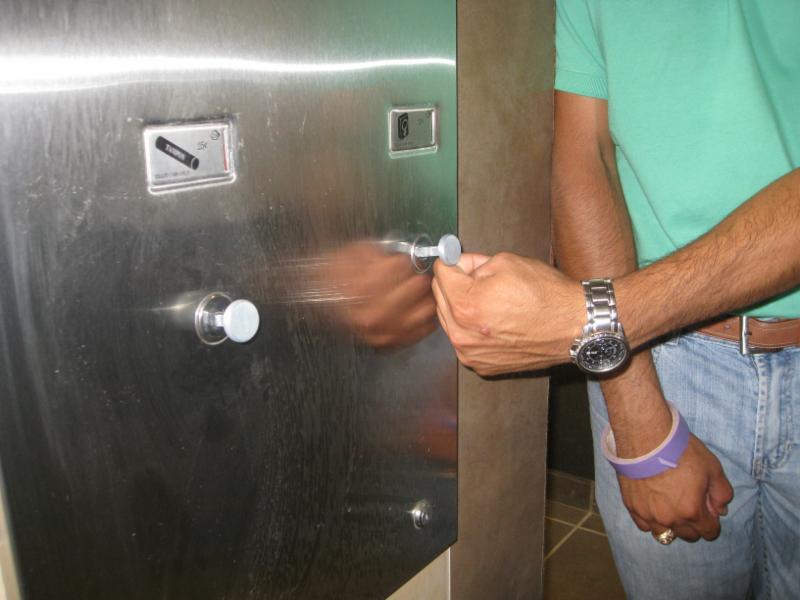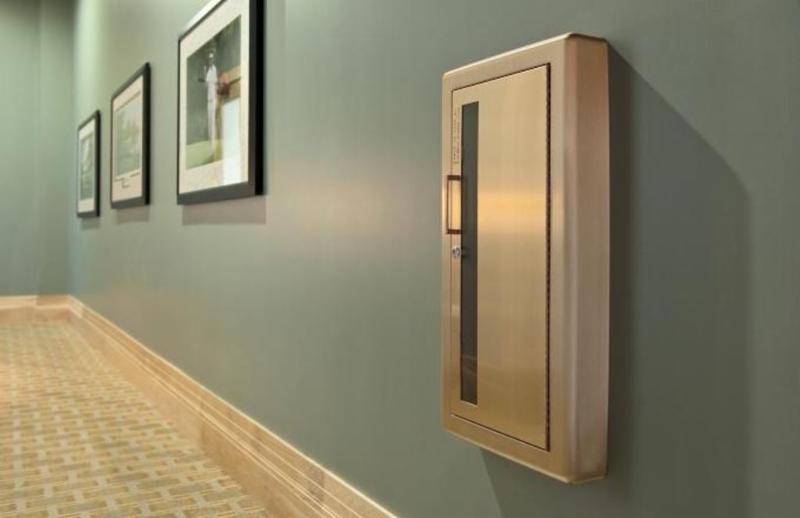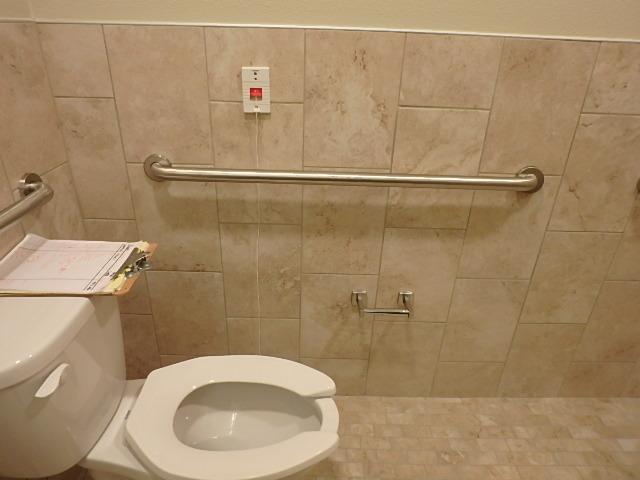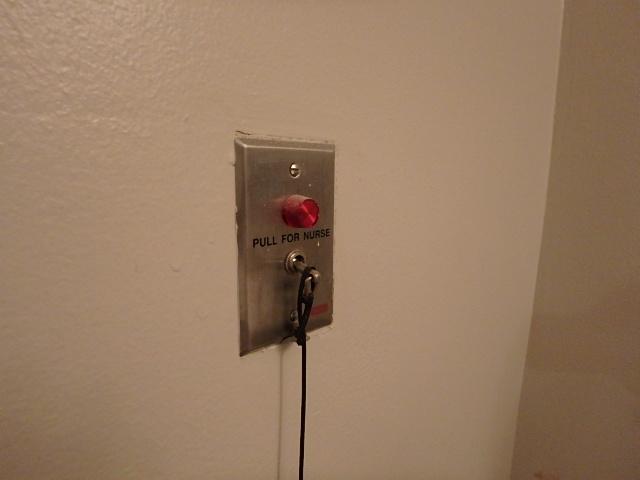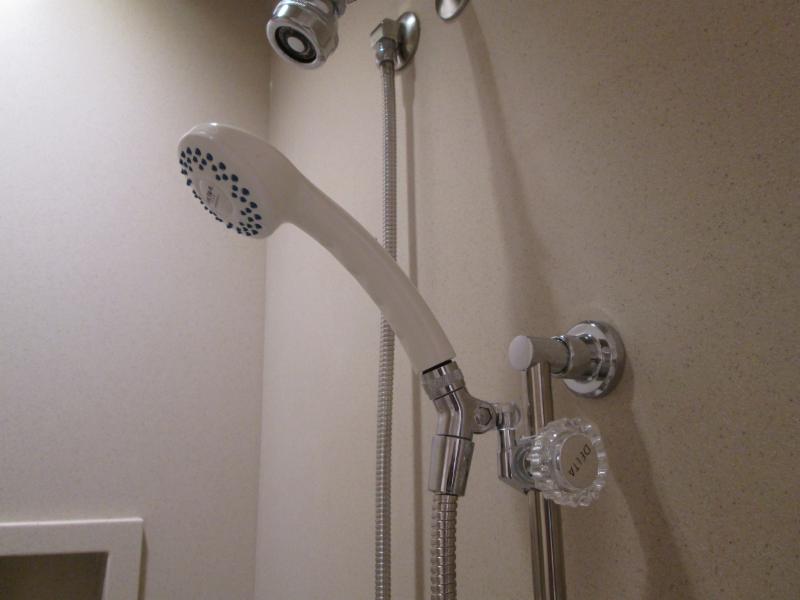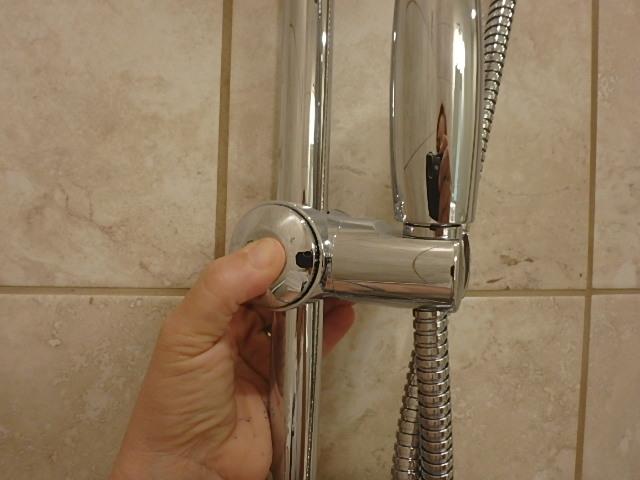Accessible operable parts and mechanisms
Posted on - Tuesday, July 3rd, 2018|
One of the guidelines that seem to be misunderstood is for operable parts. This guideline requires that an accessible operable part have a mechanism that allows for operating or use without tight grasping or pinching, twisting of the wrist, with less than 5 lbs of force and to operate using only one hand.
ADA section 309.4 Operable parts shall be operable with one hand and shall not require tight grasping, pinching, or twisting of the wrist. The force required to activate operable parts shall be 5 pounds (22.2 N) maximum.
Why this is required?
There are persons that don’t have proper use of their hands. People with rheumatoid arthritis for example, or cerebral palsy, have a hard time grasping elements. Also, there are people, like amputees, or people that were born without hands or fingers that cannot operate elements which require tight pinching. In addition, some people with disabilities or older people may not have the amount of strength required to operate an element or activate an operable part if the force required is more than 5 lbs. Therefore, the ADA design guidelines provides rules to assist those people to navigate their environment in an equal manner.
|
Scoping:Operable parts on accessible elements, accessible routes, and in accessible rooms
and spaces shall comply with with the standards. There are some exceptions which explain that certain operable parts do not have to comply: 1. Operable parts that are intended for use only by service or maintenance personnel
2. Electrical or communication receptacles serving a dedicated use (like a refrigerator) 3. Where two or more outlets are provided in a kitchen above a length of counter top that is uninterrupted by a sink or appliance, one outlet shall not be required to comply 4. Floor electrical receptacles 5. HVAC diffusers 6. Except for light switches, where redundant controls are provided for a single element, one control in each space shall not be required to comply 7. Cleats and other boat securement devices 8. Exercise machines and exercise equipment 9. Operable windows that are only operated by staff and not occupants
There is an advisory that gives us more guidance and explanation;
205.1 General. Controls covered by 205.1 include, but are not limited to, light switches, circuit breakers, duplexes and other convenience receptacles, environmental and appliance controls, plumbing fixture controls, and security and intercom systems.
Section 309
Operable parts have three requirements:
1) They must be within reach ranges as spelled out in the Section 308
2) They must have a 30″x 48″ clear floor space to reach the operable part as specified on 305. The clear floor space should have a slope no steeper than 1:48 (2%) in all directions.
3) and the operable part should be the type that will not require tight grasping and twisting of the wrist and no more than 5 lbs, like explained before.
Below are some more examples.
|
Fire Extinguisher cabinetI get this question a lot about fire extinguisher cabinets:
“Do we mount the cabinet so that the top of the fire extinguisher is between 15″-48″ a.f.f.?”
The answer is no. The reach range is for “operable parts” of fixed elements. So a fire extinguisher would not be the operable part, but the handle to open the cabinet would be. So one should locate the fire extinguisher cabinet door handle between 15″-48″ a.f.f.
|
Emergency Nurse callingAnother operating mechanism that is confusing is the emergency call button located in medical care facilities and long term care facilities. They are used when a patient or resident needs a nurse. They are typically located next to the toilet and in the shower and they are required to have a string that reaches the floor. The string is used if a patient or resident falls and they need to pull the string if they can’t get up.
In order for the call button to be compliant, it must not only have the string, but it should have a second way of calling the nurse which will not require tight grasping and pulling.
|
Adjustable mechanism at the hand held showerOne of the operating mechanism that is forgotten is the one required to adjust a hand held shower unit.
Once the height is adjusted, the mechanism to loosen or tighten the adjustable part is not always used again. But the initial action to adjust must meet the requirements. So the adjustable mechanism must also comply.
|
Need Barrier Free CEUs?We are giving classes in the following locations:
Metrocon18-Dallas Texas
Thursday August 9th 12:30-1:30 “APPLYING THE ADA AND AVOIDING VIOLATIONS IN ACCESSIBLE DESIGN”
Online courses:
Green CE On Demand Webinar: “Understanding the 2010 ADA Standards for Accessible Design”
Green CE On Demand webinar “How Accessible is Your work place?”
Green CE On Demand webinar “ADA and Residential Facilities”
AIA U online course: “Applying the ADA on Existing and Altered Buildings”
or
If you want to learn more about these standards, be sure to check out my books:
|
 Abadi
Abadi 

